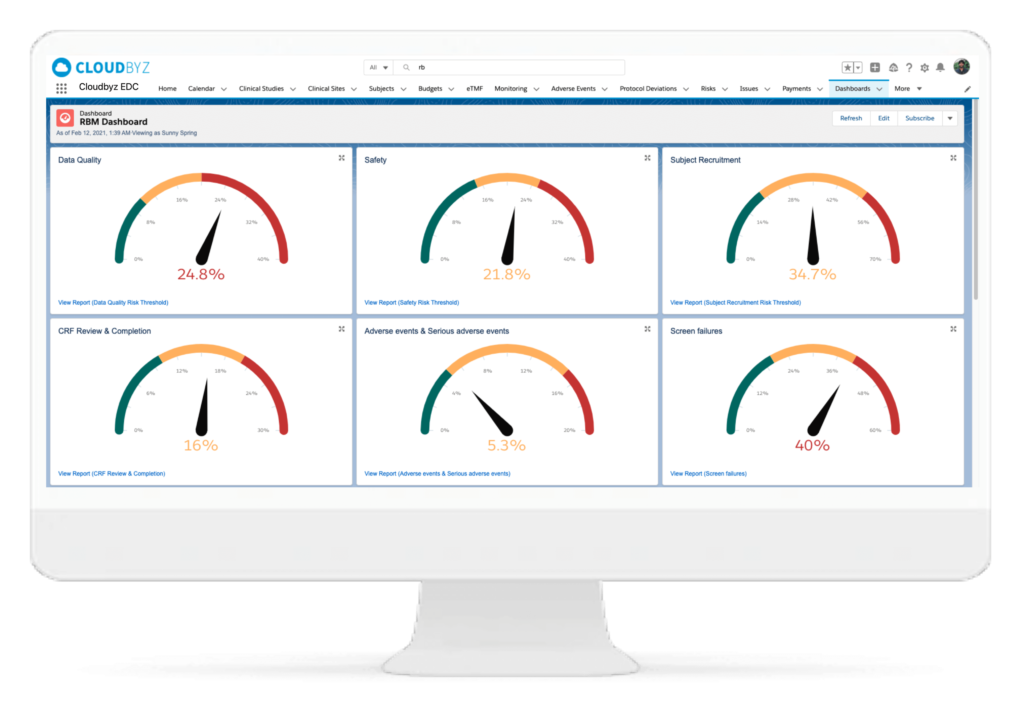Request a demo specialized to your need.

Risk-based monitoring (RBM) is a clinical trial monitoring approach that focuses resources on areas that pose the greatest risk to data quality and patient safety. The RBM approach is gaining popularity as it provides a more efficient and effective method for monitoring clinical trials. However, implementing RBM can be a challenging task. In this blog, we will discuss 12 important things to consider when implementing RBM in clinical trials.
Identify the critical data points:
- Identifying the critical data points is the first step in implementing an RBM approach. This involves determining which data points are most critical to the study objectives and patient safety. This information will help in determining the key risk indicators (KRIs) and critical data elements (CDEs) that require the most attention during monitoring.
Develop a risk assessment plan:
- Developing a comprehensive risk assessment plan is critical in implementing an RBM approach. The plan should take into account the complexity and size of the trial, as well as the potential risks associated with it. The plan should identify potential risks, assess their likelihood and impact, and outline appropriate mitigation strategies.
Define monitoring strategies:
- Defining the monitoring strategies that will be used in the trial is important to ensure that the trial is being monitored appropriately. This may include centralized monitoring, targeted source data verification (SDV), remote monitoring, or a combination of these strategies.
Create a monitoring plan:
- Developing a monitoring plan is essential in implementing an RBM approach. The monitoring plan outlines the monitoring approach, frequency, and roles and responsibilities of the monitoring team. The plan should be tailored to the specific trial and should take into account the risk assessment plan.
Set up a monitoring team:
- Identifying the individuals who will be responsible for monitoring the trial is essential to the success of an RBM approach. This includes the study sponsor, clinical research organization (CRO), and site staff.
Train the monitoring team:
- Training the monitoring team on the RBM approach, the monitoring plan, and the technology tools that will be used to monitor the trial is critical. This will ensure that the monitoring team is equipped with the necessary knowledge and skills to carry out their responsibilities effectively.
Define data collection methods:
- Defining the data collection methods that will be used during the trial is important in implementing an RBM approach. This includes electronic data capture (EDC) systems, source data, and central laboratory data.
Develop metrics and reports:
- Developing metrics and reports is essential to track the progress of the trial and identify any potential issues. These metrics and reports should be tailored to the specific trial and should take into account the risk assessment plan and monitoring plan.
Establish quality control procedures:
- Establishing quality control procedures is critical to ensuring the accuracy and completeness of the data collected during the trial. This includes procedures for data cleaning, query resolution, and quality control.
Define escalation procedures:
- Defining escalation procedures is important to ensure that any issues identified during the monitoring process are addressed in a timely manner. These procedures should outline the steps that will be taken to escalate issues to the appropriate individuals or teams.
Establish a communication plan:
- Developing a communication plan is essential to ensure that stakeholders are kept informed throughout the trial. The communication plan should outline the communication channels and protocols that will be used to share information among the monitoring team and other stakeholders.
Monitor and evaluate the RBM approach:
- Monitoring and evaluating the RBM approach throughout the trial is important to identify any areas that may require modification or improvement. This includes monitoring the effectiveness of the monitoring plan, metrics, and reports, and making any necessary adjustments to improve the RBM approach.
In summary, implementing an RBM approach in clinical trials requires careful planning, effective communication, and a commitment to quality. By considering the 12 factors outlined above, organizations can implement an RBM approach that is tailored to their specific trial and maximizes the efficiency and effectiveness of their monitoring activities.
Cloudbyz Unified Clinical Trial Management (CTMS) is a comprehensive, integrated solution to streamline clinical trial operations. Built on the Salesforce cloud platform, our CTMS provides real-time visibility and analytics across study planning, budgeting, start-up, study management, and close-out. Cloudbyz CTMS can help you achieve greater efficiency, compliance, and quality in your clinical operations with features like automated workflows, centralized data management, and seamless collaboration. Contact us today to learn how Cloudbyz CTMS can help your organization optimize its clinical trial management processes.
To know more about the Cloudbyz Unified Clinical Trial Management Solution contact info@cloudbyz.com
Subscribe to our Newsletter

